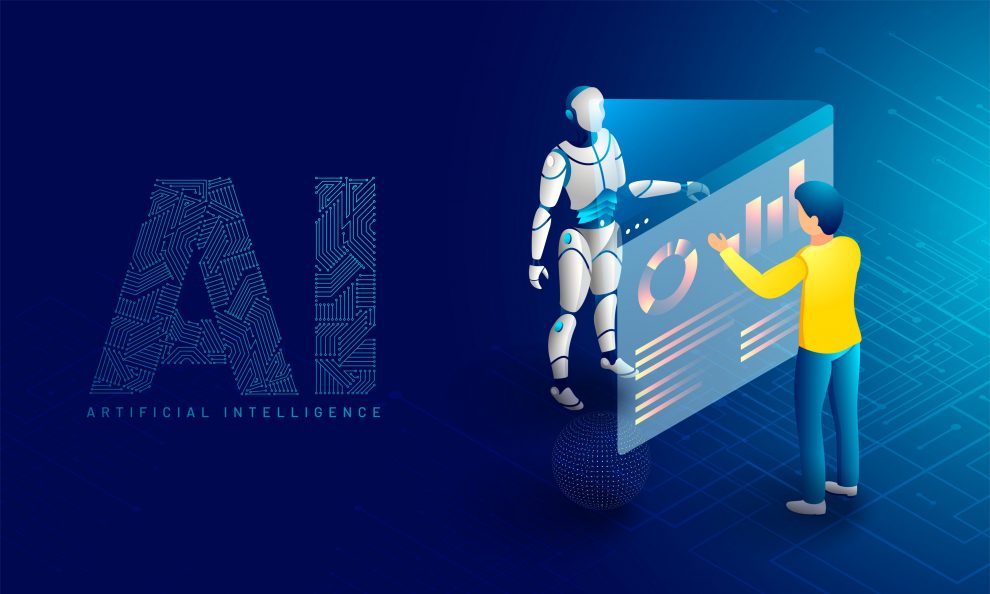Understanding AI
Artificial intelligence (AI) is an area of computer science that emphasizes the creation of intelligent machines that work and react like humans. Some of the activities computers with artificial intelligence are designed for include: Speech recognition, Learning, Planning, Problem solving.
Artificial intelligence is a branch of computer science that aims to create intelligent machines. It has become an essential part of the technology industry. Research associated with artificial intelligence is highly technical and specialized. The core problems of artificial intelligence include programming computers for certain traits such as: Knowledge, Reasoning, Problem solving, Perception, Learning, Planning, and Ability to manipulate and move objects. Knowledge engineering is a core part of AI research.
Machines can often act and react like humans only if they have abundant information relating to the world. Artificial intelligence must have access to objects, categories, properties and relations between all of them to implement knowledge engineering.
Initiating common sense, reasoning and problem-solving power in machines is a difficult and tedious approach. Machine learning is another core part of AI. Learning without any kind of supervision requires an ability to identify patterns in streams of inputs, whereas learning with adequate supervision involves classification and numerical regressions.
Deep learning is a term to describe certain types of neural networks and related algorithms that consume often very raw input data. They process this data through many layers of nonlinear transformations of the input data in order to calculate a target output.
Unsupervised feature extraction is also an area where deep learning excels. Feature extraction is when an algorithm is able to automatically derive or construct meaningful features of the data to be used for further learning, generalization, and understanding. The burden is traditionally on the data scientist or programmer to carry out the feature extraction process in most other machine learning approaches, along with feature selection and engineering.
Machine learning came directly from minds of the early AI crowd, and the algorithmic approaches over the years included decision tree learning, inductive logic programming. clustering, reinforcement learning, and Bayesian networks among others. As we know, none achieved the ultimate goal of General AI, and even Narrow AI was mostly out of reach with early machine learning approaches.
As it turned out, one of the very best application areas for machine learning for many years was computer vision, though it still required a great deal of hand-coding to get the job done. People would go in and write hand-coded classifiers like edge detection filters so the program could identify where an object started and stopped; shape detection to determine if it had eight sides; a classifier to recognize the letters “S-T-O-P.” From all those hand-coded classifiers they would develop algorithms to make sense of the image and “learn” to determine whether it was a stop sign.
Futuristic Advantages
- They will probably be increasingly used in the field of medicine.
- A knowledge based expert system, which can cross-reference symptoms and decreases will greatly improve the accuracy of diagnostics.
- Objective recognition will also be a great aid to doctors.
- Along with images from cats’ cans or X-ray machines, they will be able to get preliminary analysis of those images.
- This of course will be possible only if people solve legal questions that arise by giving power to a machine to control or influence the health of a human.
Drawback.
Self-modifying, when combined with self-replicating, can lead to dangerous, unexpected results, such as a new and frequently mutating computer virus.
Popular Applications of Artificial Intelligence in Use Today.
- Siri – Apple’s personal assistant
- Alexa – Amazon’s smart home’s hub product.
- Tesla – Car with self-driving feature and many more technological “coolness.”
- Cogito – Cogito is quite possibly one of the most powerful examples of behavioral adaptation to improve the emotional intelligence of customer support representatives that exists on the market today.
- Boxever – is a company that leans heavily on machine learning to improve the customer’s experience in the travel industry
- com – predicting just what we’re interested in purchasing based on our online behavior.
- Netflix – Netflix provides highly accurate predictive technology based on customer’s reactions to films. It analyzes billions of records to suggest films that you might like based on your previous reactions and choices of films.
- Pandora – Based on 400 musical characteristics, each song is first manually analyzed by a team of professional musicians based on this criterion, and the system has an incredible track record for recommending songs.
- Nest – the learning thermostat that was acquired by Google in January of 2014, uses behavioral algorithms to predictively learn from your heating and cooling needs.
Conclusion.
AI is an extremely powerful and exciting field. It’s only going to become more important and ubiquitous moving forward, and will certainly continue to have very significant impacts on modern society.
Artificial neural networks (ANNs) and the more complex deep learning technique are some of the most capable AI tools for solving very complex problems, and will continue to be developed and leveraged in the future.
While a terminator-like scenario is unlikely any time soon, the progression of artificial intelligence techniques and applications will certainly be very exciting to watch!



Add Comment